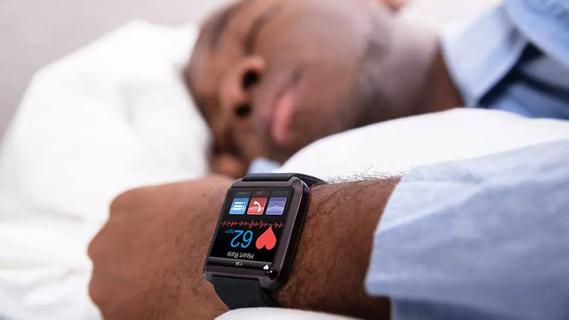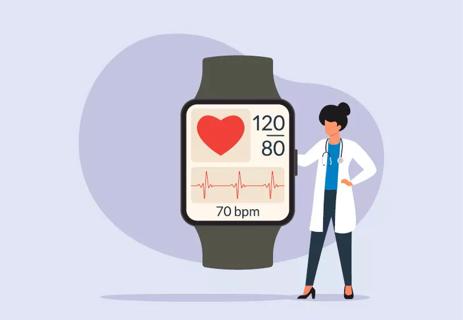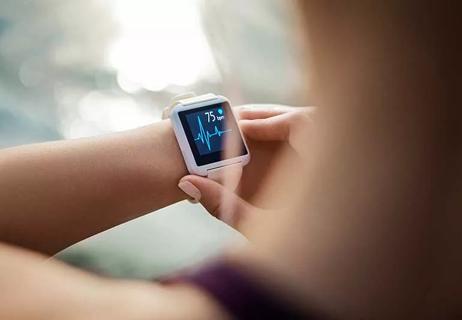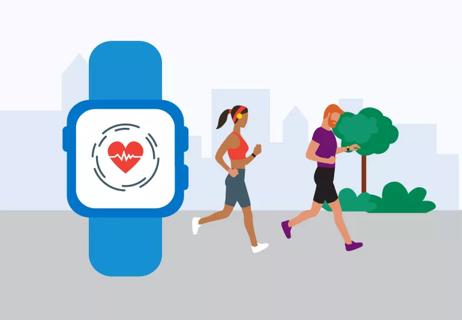Setting a max heart rate for kids can be tough, so focus more on how they feel during activity

Children need exercise. Regular activity builds muscles, toughens bones and strengthens a young heart. But when it comes to heart rate, just how hard should kids push it while running around?
Advertisement
Cleveland Clinic is a non-profit academic medical center. Advertising on our site helps support our mission. We do not endorse non-Cleveland Clinic products or services. Policy
That question comes up frequently these days, given all the wrist-worn gadgets that track a wearer’s beating heart. People want to know a specific target number for a child’s maximum heart rate.
So, what’s the answer? Well, it’s tougher than you might think to pinpoint, according to pediatric cardiologists Rashmi Rao, MD, and Kenneth Zahka, MD. Here’s why.
There’s a well-known math formula that adults use to determine maximum heart rate. Basically, subtract your age from 220 and that’s the target. (So, if you’re 40 years old, your max heart rate would be 180 according to the number crunching: 220 – 40 = 180.)
It’s a simple way for adults to define and set upper heart rate limits during exercise. Unfortunately, the math doesn’t quite work when it comes to kids.
“It’s very common that children’s maximum heart rates, on average, are lower than what you would get from the ‘220 minus your age’ equation,” says Dr. Zahka. “That formula creates a maximum heart rate that’s too high for children under age 18.”
The average maximum heart rate for on-the-move children ages 8 to 17 typically falls in the mid-190s, he continues. (Using the above formula, an 8-year-old child would show a way-too-high max heart rate of 212.)
Advertisement
Being off-target is an issue, given that the maximum heart rate is the highest heart rate a healthy person should look to hit without experiencing problems related to exercise stress. (More on that in a minute.)
Maximum heart rate also is used to determine target heart rate zones during different phases of exercise. So, if you’re off for the top number, you’re off for them all.
“The formula just doesn’t correlate to kids,” reiterates Dr. Rao.
Children generally have a higher resting heart rate than adults because they have a smaller heart size, decreased stroke volume and decreased blood volume. These characteristics throw off the formula and make it inaccurate for children.
Max heart rate numbers can vary significantly from child to child due to diet and nutrition, medications or health issues such as thyroid problems, notes Dr. Zahka. Genetics also can play a role.
Your healthcare provider can pinpoint your child’s actual maximum heart rate with a formal exercise test if you really need to know the number — but it’s probably not necessary.
So, if you don’t have a max heart rate number formula for children, how can you tell when kids are overdoing it or pushing to their limits? Basically, go by how they feel. (How’s that for a twist in today’s metric-driven world?)
“Most children under most circumstances will limit themselves appropriately with exercise,” says Dr. Zahka. “They’ll slow down or stop when they need to. The important thing is that they know to listen to their bodies.”
Signs that children are overdoing it and creating exercise stress would include:
If a child begins showing these signs, they should stop and take a break. “Laying them down is a good start, especially if they’re dizzy,” advises Dr. Rao. “When you get your head and heart at the same level, it’s easier for blood to get to the brain and prevent them from fainting.”
They should use the opportunity to rehydrate, too. (Fast fact: Dehydration can lead to dizziness. Active children and adults should make it a priority to drink enough fluids over the course of the day.)
“Most kids will feel better within minutes and are ready to go again,” states Dr. Rao.
Children typically have higher resting heart rates during their infant and toddler years and then see the numbers fall as they reach adolescence. Heart rate readings begin to trend toward adult numbers during their teen years.
By life stage, expected resting heart rate ranges are:
Advertisement
Resting heart rates that persistently spike above these zones merit attention. “That would be a situation where it would be worthwhile to see someone and do some testing to see why the pattern exists,” advises Dr. Rao.
That could lead to the use of a Holter heart monitor for 24 or 48 hours to track heart rate and heart rhythm. An activity diary is kept during the period, too, to correlate what’s happening with data from the monitor.
Questions about heart rate definitely increased as more kids — particularly teens — started strapping on data-gathering smartwatches. It seems that tracking a heart rate throughout the day and during exercise can become somewhat of an obsession.
But try to avoid hanging on every number that pops up, suggests Dr. Rao.
“Fixating on the numbers should not be the goal,” she continues. “Take a step back and focus on how the child is doing and how they look and feel. That’s a more useful approach than just looking at heart rate, particularly in terms of exercise.”
Advertisement
Learn more about our editorial process.
Advertisement

Deep breathing, yoga and meditation are just some ways to bring your heart rate down right away

Lifestyle changes can help strengthen your heart so it doesn’t have to work as hard when your body is at rest

A resting heart rate below 35–40 beats per minute or over 100 beats per minute may be cause for concern

Your heart rate naturally slows down while you sleep, but lower numbers aren’t always concerning

Both are related to your cardiovascular system, and both can impact the other

60 to 100 beats per minute is ‘normal,’ but you can still be healthy outside that range

Bradycardia, or a low heart rate, is more likely as you age — and could be a sign of health issues

Leg-related symptoms indicate DVT, while chest symptoms point to a pulmonary embolism

Leg-related symptoms indicate DVT, while chest symptoms point to a pulmonary embolism

There are many different ways to love someone and yourself

Looking down at your smartphone or computer screen can stress muscles in your neck, shoulders and back